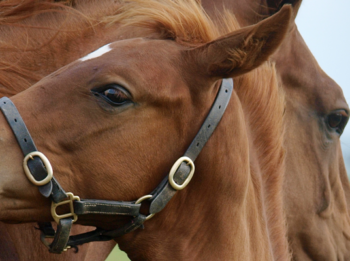Developmental Orthopedic Disease
WHAT IS IT?
Developmental orthopedic disease (D.O.D.) can be loosely defined as any musculoskeletal disorder that occurs in the young animal as a result of growth and maturation. Invariably, it is related to the process of endochondral ossification and the maturation of cartilage to bone in the developing skeletal system. In the horse there are four clinical manifestations; physitis, osteochondrosis, angular limb deformity, and flexural limb deformity.
WHAT ARE THE SYMPTOMS?
• Degenerative joint disease
• Wobbler’s Syndrome
• Contracture of tendons
• Mal-alignment of the limbs
• Club feet
• Bog spavin (hocks)
• Puffy joints (fluid in the joint )
• Stiffness
• Flexion responses
• Lameness (Often seen when training begins)
• Pain
WHAT ARE THE CAUSES?
Genetics, nutrition, trauma, excessive concussion, illness, conformation, hormonal imbalances, disease and basic management practices may all contribute to DOD. Feeding excessive amounts of grain to young horses causes an unnatural fluctuation in levels of hormones such as insulin, growth hormone and thyroid hormones. This can result is the development of the over-conditioned (fat) horse with an increased risk of DOD. Mineral imbalances may also influence the incidence and severity of DOD. It is critical that the brood mare is fed a diet with the correct mineral balance and energy requirement to provide the foal adequate nutrients for the initial development of their limbs. Proper calcium and phosphorus intake is crucial to healthy growth and development of bones. Copper, zinc and selenium are other critical minerals that must be fed in adequate amounts to ensure optimal bone growth.
DIAGNOSIS:
Contrast radiographs, nuclear scintigraphy, and/or endoscopy to help detect OCD lesions
FEEDING & MANAGEMENT:
Lack of free exercise, sudden changes in nutrition levels, and exposure to stress can contribute to DOD in young horses. Free exercise increases bone strength. Thus it’s best not to confine growing horses to stalls for more than 10 hours a day. Abrupt changes in energy, protein or mineral intake level of growing horses can sometimes trigger abnormal growth rates and orthopedic disorders. Likewise, increased stress, such as poor weaning programs, can adversely affect growth weights and increase the weanling’s susceptibility to DOD. Surgery is a final option for treatment of DOD, but surgery is often avoided with proper nutrition and management.

Available Across the West.
Distributed throughout the Northwest, Southwest, Hawaii and Texas.
Find a Dealer Near You
